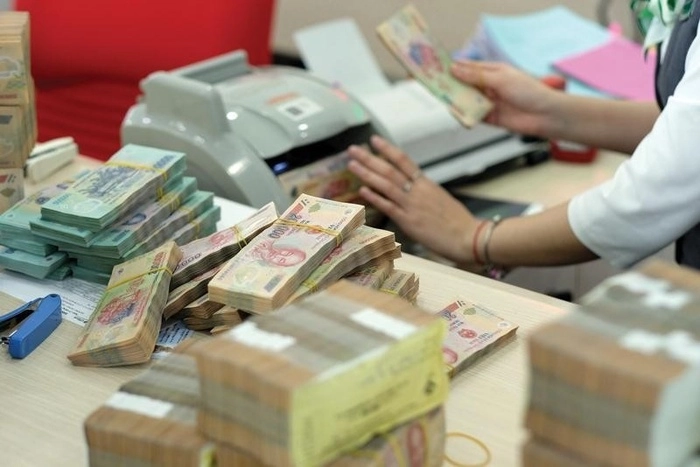Resolution No. 59/NQ-CP dated April 23, 2023 on solutions to support and remove difficulties for borrowers to serve the needs of life and consumption has been realized by Circular 02/ 2023. These adjustments are highly appreciated by the market, but the pressure to repay customers and the risk of bad debt of financial companies are being weighed down by a small regulation. This needs to be removed soon or it will be like a small manhole blocking a large flow.

“Evicting” black credit from the industrial park
On October 7, 2022, the Vietnam General Confederation of Labor signed an agreement with HD SAISON Financial Company and FE CREDIT Finance Company to deploy a loan package of VND 20,000 billion for workers with an interest rate reduced to 50%. compared to the current level. After that, FE CREDIT signed a memorandum of understanding with the Confederation of Labor of Da Nang, Ba Ria-Vung Tau, Nghe An, Long An, Dong Nai, Binh Duong, Quang Nam, Bac Ninh, Bac Giang. HD SAISON signed with nearly 30 Labor Confederations of provinces about this worker loan package. Currently, two financial companies are piloting the program in industrial zones in these provinces and are expected to expand to 63 Labor Confederations across the country.
Deputy Governor of the State Bank Dao Minh Tu highly appreciated this loan package, because it has supported trade union members and workers in need of consumer loans, helping to repel the “black credit” problem. In fact, “black credit” – a form of lending with high interest rates is no longer rampant and public, but “black credit” lines still evade the law and cause many complicated consequences. security for society. Colonel Do Minh Phuong, Deputy Head of the Criminal Division, Criminal Police Department (Ministry of Public Security), said that black credit flourished in many sophisticated forms, especially operating under the guise of technology companies. Application development (app) for loans. Customers of these applications are mainly employees, low-income people…
According to a report by the Criminal Police Department, in 2022, local police across the country received and detected nearly 1,000 cases out of 1,600 subjects related to “black credit”, thereby prosecuting more than 500 cases. , administratively sanctioned more than 150 cases.
Data from the State Bank shows that currently there are 16 financial companies that are allowed to operate under the law. By the end of 2022, the outstanding consumer loans of consumer finance companies reached about VND 200,000 billion, an increase of more than 20% compared to the end of 2021, accounting for nearly 6% of the system’s consumer loan balance and accounting for nearly 6 percent of the total consumer loan balance of the system. about 1.3% of the whole economy’s outstanding loans. Looking at the proportion of consumer loans outstanding in developed countries up to 50% – 60%, it can be seen that there is still room for outstanding consumer loans in Vietnam. But, looking at the growth rate of outstanding consumer loans in previous years, which was usually at 30% – 60% per year, it can be seen that the development is slowing down. Part of the reason is that the scale of outstanding loans is now much larger than before, but the demand for consumer loans has also been affected by the risks of the economy in the past three years.
Soon remove the mechanism to update the highest debt group
In a remarkable development, the Government issued Resolution No. 59/NQ-CP on solutions to support and remove difficulties for borrowers to serve the needs of life and consumption. The resolution clearly states that the Government agrees with the proposal of the State Bank of Vietnam in the report No. 57/TTr-NHNN dated April 22, 2023 on solutions to support and remove difficulties for borrowers. consumption and living needs.
Immediately after Resolution No. 59 is Circular 02 allowing debts arising from the year 2023 to have principal and/or interest obligations to be extended until June 30, 2024. Specifically, in addition to the business and production sector, Circular 02 has added the permission for debt rescheduling/deferral for the consumer lending sector – an area that is also facing many difficulties in the context of high interest rates. and income decline.

Ms. Tran Thi Thu Thao, an analyst at VNDirect, said that extending the debt restructuring term for another 6 months helps to increase the effectiveness of Circular 02, because the policies introduced need some time to get used to and implement. . In general, this circular will reduce the pressure of provisioning for banks when the restructuring debt is allocated in 2023 and 2024. At the same time, the circular also has a positive impact on investor sentiment. invest in shares of banks with a high proportion of real estate loans and consumer loans such as VPBank, Techcombank, MB… because these banks are currently facing a higher risk of bad debt compared to other banks. other banks.
VNDirect estimates that FE CREDIT’s outstanding loan balance decreased by 2.7% YoY or increased by 3.4% when calculating the loan of VND4,570 billion that the company sold to the parent bank. Notably, the bad debt ratio jumped from 13.6% at the end of 2021 to 20.4% at the end of 2022, significantly increasing operating and provision expenses at 28% and 23%, respectively. causing FE CREDIT to shift from a pre-tax profit of VND 610 billion in 2021 to a loss of VND 3,000 billion in 2022.
To really promote the development of the consumer finance market, one of the most practical moves, suggested by experts, is to remove the debt classification mechanism by the highest debt group on the Credit Information Center. Vietnam (CIC). This issue is related to Circular 11/2021/TT-NHNN on asset classification, deduction level, method of setting up risk provisions and the use of provisions to handle risks in the operation of organizations credit institutions, foreign bank branches, effective from October 1, 2021. Accordingly, regarding the classification of debts and setting up of risk provisions, monthly after the classification of debts and foreign commitments is made. the list, credit institutions need to adjust the debt group according to the debt group of the list of customers provided by CIC; based on results of adjustment of debt group to adjust the amount of provision for risks of the last month of the quarter.
In fact, the subsequent recognition of debt from other credit institutions will lead to the credit institution having to switch from debt collection overdue to overdue, even bad debt to match the level of risk. of cutomer. Simultaneous collection of debts at the same time of all credit institutions will create great debt repayment pressure for customers, especially customers with good will to repay, they tend to find short-term financial sources. term to fulfill obligations with credit institutions.
In the context of the economy facing many difficulties, the implementation of updating the highest debt group and at the same time making provision for risks based on this highest debt group causes many undesirable effects on credit institutions, the entire banking industry, especially customers. And experts say that this is a small technical regulation that should be removed soon.
